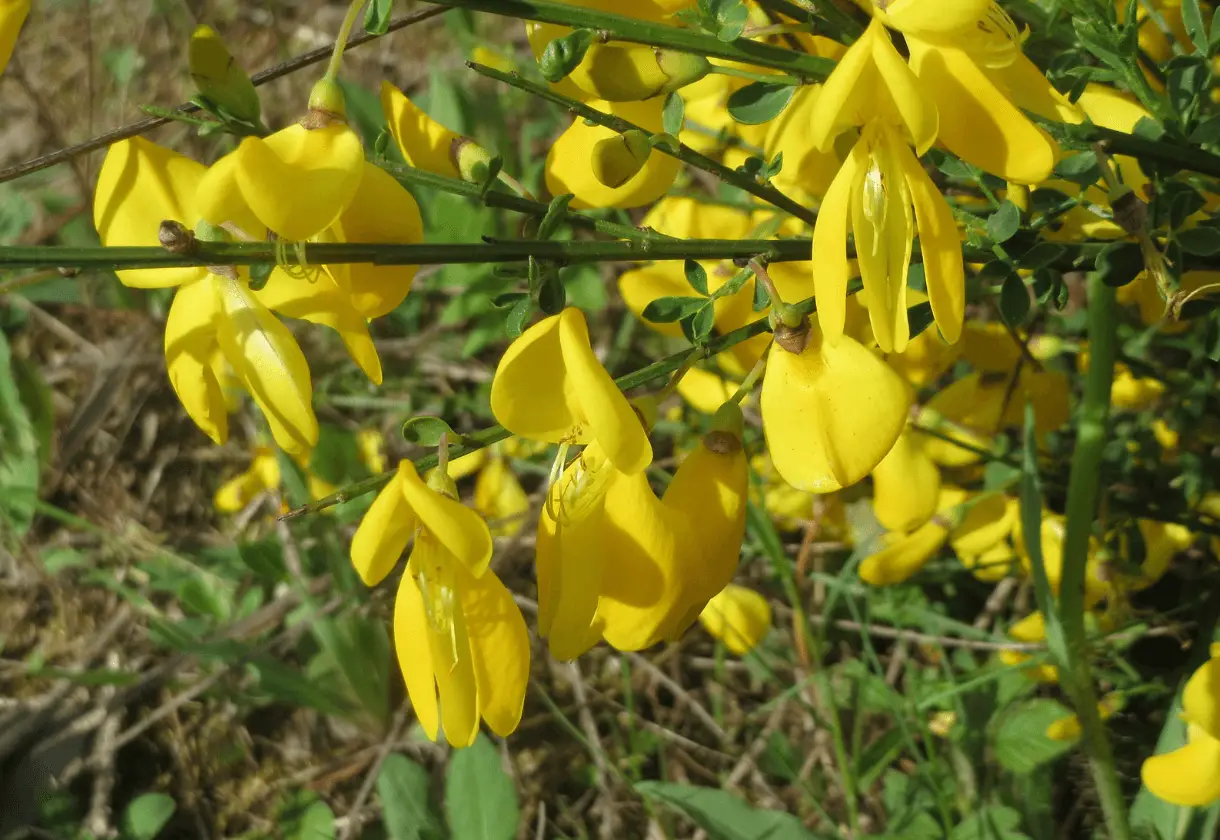How to grow and care for Cytisus scoparius.

Cytisus scoparius, or Scotch broom, is a beautiful plant that belongs to the pea family and is native to Europe. It is a popular plant choice among gardeners, thanks to its vibrant yellow flowers and attractive foliage. This plant has a long and rich history of medicinal use dating back to the Middle Ages, when it was believed to have magical properties and was used in various rituals. It was also used for medicinal purposes, particularly as a diuretic and laxative, thanks to its numerous health benefits – though we wouldn’t recommend using it for health purposes when growing your own.
Growing Cytisus Scoparius
Cytisus scoparius is a hardy plant that can thrive in various environments. It prefers full sun and well-drained soil, but it can also tolerate some shade and poor soil conditions. It’s a fast-growing plant that can reach up to 10 feet tall and 8 feet wide, so make sure to give it plenty of space to grow.
When planting Cytisus scoparius, dig a hole that’s twice as wide and deep as the root ball. Place the plant in the hole and backfill with soil, making sure to firmly pack the soil around the roots. Water the plant thoroughly after planting. You can also add some organic matter to the soil to help retain moisture and nutrients.
Caring for Cytisus Scoparius
Cytisus scoparius is a low-maintenance plant that requires minimal care. Water it deeply once a week during the growing season, and fertilize it with a balanced fertilizer in the spring. Prune it lightly in the fall to shape it and remove any dead or damaged branches.
One of the biggest challenges with Cytisus scoparius is controlling its growth. It can quickly become invasive if left unchecked, so make sure to prune it regularly to keep it under control. You can also use mulch to suppress its growth.
Benefits of Cytisus Scoparius
Cytisus scoparius is not just a beautiful plant, it also has many benefits for your garden. Its bright yellow flowers bloom in the spring and summer, and its attractive foliage adds interest to your landscape year-round. It’s also a great plant to attract bees, butterflies, and other beneficial insects to your garden. The plant’s roots can help prevent soil erosion and its leaves can be used as a natural mulch to help retain moisture in the soil.
Frequently Asked Questions
When is the best time to prune Cytisus scoparius in the UK?
Why is Cytisus scoparius called Scotch Broom?
Is Cytisus scoparius harmful to other plants or animals?
Can I grow Cytisus scoparius from seed?
Conclusion
In conclusion, Cytisus scoparius is a stunning plant that is easy to grow and care for. With its vibrant yellow flowers and attractive foliage, it is a great addition to any garden. This plant has a rich history of medicinal use and is also beneficial for your garden’s ecosystem. So, what are you waiting for? Get your hands dirty and start planting Cytisus scoparius today!






